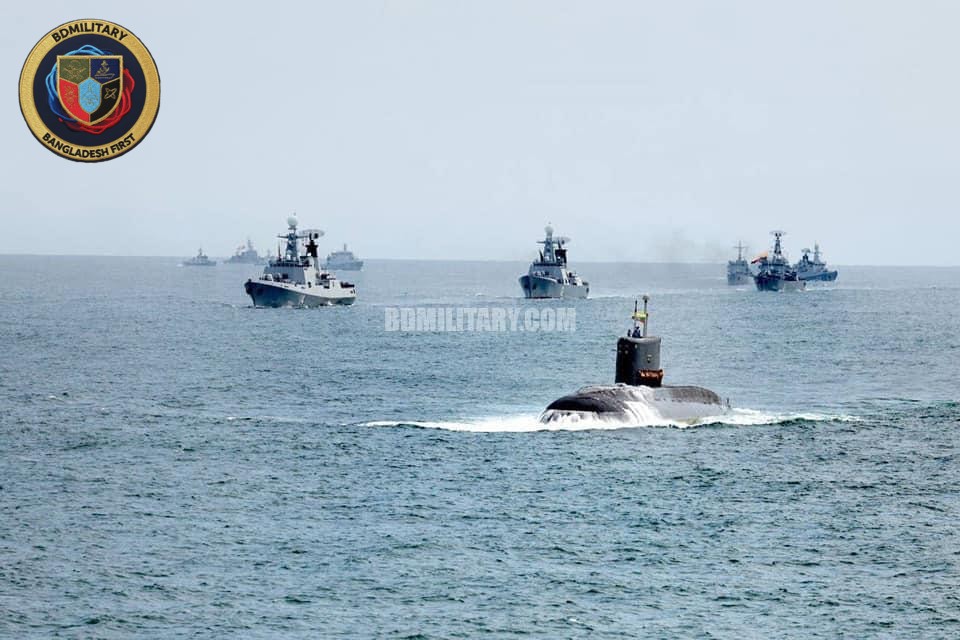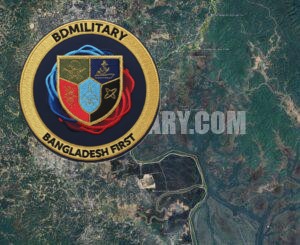The Myanmar military junta has announced that its naval forces will conduct five days of intensive exercises in the northern Andaman Sea, a development that has raised regional security concerns, particularly for neighbouring Bangladesh. The exercises, set to run from 10 to 14 November, will involve surface, air, and underwater weapons firing across a 60‑nautical‑mile-wide area west of Myeik in southern Myanmar. Maritime and aviation traffic is prohibited within a five‑mile radius of the exercise zone, and aircraft are restricted from flying below 15,000 ft over the site.
These drills occur amid Myanmar’s ongoing military campaign against the Arakan Army (AA) in Rakhine State, where Chinese-backed oil and gas projects are located. Despite the junta’s air and naval operations, AA forces have proven resilient, prompting speculation that the Andaman Sea exercises may form part of broader preparations for operations along Myanmar’s western coastline.
Complicating matters further, Myanmar recently hosted a joint naval exercise with Russia, its close ally and major arms supplier, in the same region. Analysts interpret this as a clear signal of Myanmar’s intent to strengthen its maritime capabilities and expand its operational reach in the northern Bay of Bengal. Such developments carry implications for Bangladesh, which shares borders both on land and at sea with Myanmar.
From Bangladesh’s perspective, there are multiple security considerations. While the exercise zone lies south of Bangladesh’s maritime frontier, the increased naval presence in the northern Bay could affect shipping lanes, fishing activities, and freedom of navigation. Accidental incidents involving Bangladeshi vessels cannot be ruled out, particularly given the live‑fire nature of the exercises.
Heightened military activity in Rakhine State also has humanitarian implications. Bangladesh has historically received large influxes of refugees from the region, and any escalation of coastal or amphibious operations by Myanmar may exacerbate displacement or border tensions. Simultaneously, Bangladesh’s armed forces have been closely monitoring recent military exercises in north‑east India near its borders, reflecting Dhaka’s heightened vigilance in tracking regional military developments.
Regional analysts also point to broader maritime implications. Myanmar’s enhanced naval capability, strengthened through external partnerships, could alter the balance of power in the Bay of Bengal. Bangladesh may need to reassess its maritime strategy, particularly with regard to offshore resource exploration and maritime traffic protection, and consider deeper coordination with neighbouring littoral states such as India.
In response, Bangladesh is expected to enhance maritime surveillance, improve coordination between the navy and coast guard, and maintain diplomatic engagement with Myanmar to avoid miscalculations. Additionally, contingency planning for potential humanitarian and security spillovers from Rakhine remains a priority.
While officially presented as routine naval drills, the Andaman Sea exercises, combined with Myanmar’s growing external partnerships and ongoing internal conflicts, underscore the complex security environment facing Bangladesh. Vigilance, strategic foresight, and regional cooperation will be essential in navigating these emerging challenges.
Annex: Myanmar Naval Exercise Details
| Parameter | Details |
|---|---|
| Exercise Duration | 10–14 November 2025 |
| Location | Northern Andaman Sea, west of Myeik, Myanmar |
| Area Coordinates | Point A: 12°51′ N, 96°40′ EPoint B: 12°51′ N, 97°40′ EPoint C: 11°51′ N, 97°40′ EPoint D: 11°51′ N, 96°40′ E |
| Area Size | Approximately 60 nautical miles wide |
| Activities | Surface, air, and underwater weapons firing |
| Maritime Restrictions | No ships, boats, fishing vessels, or motor vehicles within 5-mile radius |
| Aviation Restrictions | No aircraft or helicopters below 15,000 ft over the exercise area |
| Strategic Context | Linked to Myanmar’s ongoing operations against Arakan Army in Rakhine; Russia joint naval exercise signals external support and capability enhancement |
| Potential Regional Impact | Disruption to shipping/fishing, maritime boundary vigilance, refugee/migration risks, shifts in regional maritime power balance |

Ayesha Farid is a regional security specialist focusing on South Asia, with over a decade of experience analysing inter-state tensions, cross-border insurgency, and regional power dynamics. She has worked with leading policy think tanks and academic institutions, offering nuanced insights into the complex security challenges shaping the subcontinent. Ayesha’s expertise spans military doctrines, border disputes, and regional cooperation frameworks, making her a vital contributor to BDMilitary’s coverage of South Asian strategic affairs. She leads the Geopolitics & Diplomacy section at BDMilitary. Ayesha holds a dual master’s degree — a Master in International Relations from the IE School of Politics, Economics & Global Affairs, Spain, and a Master of Public Policy from the Munk School of Global Affairs, University of Toronto, Canada — combining deep academic insight with practical policy expertise.


